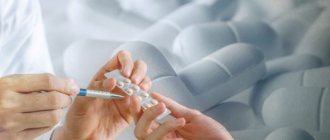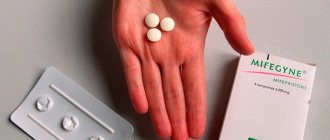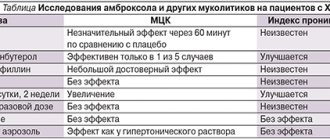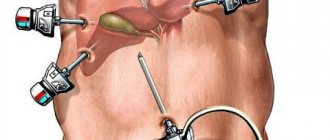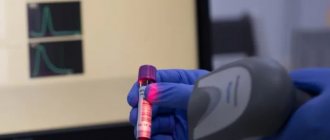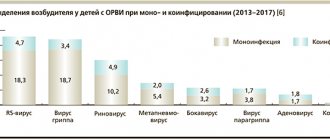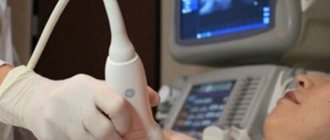Gout is a disease associated with impaired metabolism of special nitrogen-containing substances - purine bases. Purine bases are part of nucleic acids - DNA and RNA, which are responsible for the storage, transmission and implementation of hereditary information in each cell. With gout, the end product of purine base metabolism, uric acid, accumulates in the body.
Uric acid in excess amounts is deposited in the form of crystals, most often with the formation of gouty nodes (tophi) in small joints, causing their inflammation (gouty arthritis), as well as in the kidneys, which leads to the development of urolithiasis. In later stages, uric acid crystals are deposited in other organs and tissues (especially in cartilage, near joints).
Gout is accompanied by severe pain in the affected joints (usually the small joints of the toes or hands), which occurs in the evening, intensifies at night and subsides in the morning. In this case, there may be an increase in temperature - fever.
To treat gout, a special group of drugs is used, called anti-gout drugs.
Classification of drugs for the treatment of gout
Antigout drugs are classified into:
- drugs that inhibit the formation of uric acid (uricodepressants): allopurinol, febuxostat;
- drugs that increase the excretion of uric acid (uricosuric drugs): citric acid + trisodium citrate + potassium bicarbonate, sulfinpyrazone, benzobromarone, probenecid;
- anti-inflammatory drugs: colchicine, glucocorticosteroids (prednisolone, triamcinolone, methylprednisolone), non-steroidal anti-inflammatory drugs (diclofenac, indomethacin, naproxen, ibuprofen, ketoprofen, nimesulide).
Causes of gout development
- Taking medications: diuretics (thiazide diuretics), low doses of aspirin (1g per day), cyclosporines.
- Diseases and conditions that lead to the appearance of gout: diabetes, obesity, coronary heart disease, arterial hypertension, metabolic syndrome, chronic renal failure, lead poisoning, organ transplantation, psoriasis, blood diseases. Exacerbation of gout is facilitated by intravenous administration of contrast (during X-ray examinations), trauma, and surgical interventions.
- The risk of gout is extremely high in people who have a habit of consuming foods containing large amounts of purine bases (fatty meats, seafood, alcoholic beverages, carbonated drinks).
- Gout develops more often in men (age 30-60 years); in women, gout develops much less frequently and mainly during the menopausal period.
Gout Treatment Basics
Diet plays a major role in the treatment of gout. If you have gout, you should limit your consumption of foods rich in purines - red meat, legumes, cheese, cottage cheese, chocolate. In addition, you must avoid drinking alcohol (especially beer and wine).
If you have gout, it is important to maintain adequate water balance - drink at least two liters of water per day. Alkaline drinking is especially recommended (a teaspoon of soda per liter of water, alkaline mineral waters), since uric acid is more easily excreted in the alkaline environment of urine. In an acidic environment, uric acid precipitates in the form of crystals and is deposited in the kidneys.
Colchicine, glucocorticosteroids and non-steroidal anti-inflammatory drugs are used for an acute attack of gout.
During the interictal period, to reduce the level of uric acid in the blood and prevent gout attacks, drugs that inhibit the formation of uric acid - allopurinol and febuxostat - are used.
A combined drug containing citric acid, trisodium citrate and potassium bicarbonate is prescribed for urolithiasis to alkalize urine to facilitate the dissolution and removal of urinary stones.
Signs and symptoms of gout
This is an acute attack of arthritis, usually of one joint, most often the first metatarsophalangeal, ankle or knee. Typically, an attack of arthritis develops in the early morning or at night, in the midst of complete health. It manifests itself in the form of severe pressing pain in one or another joint. The affected joint swells, the temperature in the joint area rises, the skin turns red and begins to become shiny. Usually the pain becomes less during the day, but by night it gets worse again. The duration of a gout attack lasts from two to three days to a week, sometimes more. With a repeated attack, other joints may be involved in such inflammation. With a long course of gout, tophi form on the flexor surfaces of the joints, which can open with the release of uric acid crystals. At this moment, the patient experiences quite intense pain.
Radical methods
If the conservative treatment of gout on the legs prescribed by the doctor does not bring results, the disease is diagnosed in an advanced form, there are complications, doctors consider the advisability of radical treatment of gout on the legs. Minimally invasive and invasive techniques can be used. A minimally invasive technique allows you to remove tophi, open the joint cavities in order to remove purulent contents from them if an acute inflammatory process develops. This operation is performed using local anesthesia.
In advanced situations, the patient is indicated for endoprosthetics, which involves removing the joint affected by the disease. A prosthesis is installed instead. But in the majority of cases, gout on the legs can be treated with conservative methods, and it is possible to extend the period of remission for a long time.
Acute gouty arthritis
As the disease progresses and in the absence of adequate treatment, attacks of arthritis become more frequent and prolonged, and new joints of the legs are involved. Joint deformation appears due to nodular deposits and bone growths, tophi.
Tophi are uric acid crystals that are deposited in the periarticular tissues and are painless, dense yellowish nodules. Most often they are located in the area of the ears, elbow, ankle joints, joints of the hands and feet.
Joint stiffness gradually appears, making it difficult for patients to move. There is a high risk of fractures. Each new exacerbation of gouty arthritis significantly worsens the course of the disease and contributes to the rapid development of complications.
Uric acid is mainly excreted by the kidneys; the deposition of uric acid salts in the renal pelvis leads to the development of urolithiasis. The passage of concrements (stones) is manifested by intense pain in the lumbar region - renal colic.
Unconventional methods
Any alternative medicine can only be used in combination with conservative therapy prescribed by a doctor. The following means are used:
- ointment based on poplar buds;
- St. John's wort decoction;
- larkspur ointment;
- cinquefoil decoction;
- propolis ointment;
- lubricate damaged joints with a mixture of iodine and crushed aspirin tablets;
- ointment based on red pepper.
Proper nutrition is required; the diet should contain a low amount of purines. Those patients diagnosed with gout on the legs are not allowed to eat mushrooms, legumes, fatty fish and meats, offal, fried, salty and spicy foods. It is recommended to consume large amounts of fermented milk products, cereals, vegetables and fruits.
These foods contain low levels of purines. It is not recommended to consume any oil - butter, sunflower, so as not to burden the kidneys and organs of the digestive system.
With complex treatment of gout on the legs, with the help of medication, folk treatment, physiotherapeutic procedures and proper nutrition, you can achieve a quick recovery, reduce the number of attacks, reduce the severity of their symptoms, and achieve stable and long-term remission.
General information
The key reason for the development of gout on the legs is the deposition of uric acid crystals on the surface of the joint structures. In medicine they are called sodium urates. This substance appears as a result of the breakdown of nitrogenous substances - purines, these substances are part of the molecules of protein structures. Uric acid is by its nature a powerful natural antioxidant; under its influence, oxidative processes are inhibited, which negatively affect cells. Uric acid is also a powerful stimulant of brain activity.
Sodium urate deposits can appear in any joint joints, but most often gouty changes are diagnosed in the joints of the lower extremities. Since a person is constantly moving, his lower limbs constantly suffer from high loads. Also in this area there is a slowdown in systemic blood flow. Normally, a small amount of uric acid should be detected in the blood fluid, since if there is an excess, the kidneys actively remove this substance.
Sometimes the concentration of this element in the body rapidly increases, resulting in its crystallization on the surface of the joints. The main provoking factors for the development of gout also include:
- disruptions in metabolic processes;
- various diseases of the urinary system organs of chronic origin, as a result of which their functional activity decreases;
- excess amount of purines that enter the human body along with food. Most often, these are products that contain a large amount of animal proteins and nitrogen: fatty varieties of meat and fish products, seafood, mushrooms, legumes.
Often, specialists diagnose the presence of all of these provoking factors simultaneously, and this is a powerful impetus for gout in the legs to develop much faster. Most often, men undergo such pathological changes, since changes in their hormonal background are observed much more often. In women, this disease is diagnosed much less frequently, its symptoms are less pronounced, the most common manifestation of gouty arthritis is a “bone” on the leg.
Experts have proven that dietary errors are the most common provoking factors in the development of gout. That is why in complex treatment a specially selected diet is mandatory.
Rheumatologists also identify a number of reasons that can provoke gouty changes in the joints:
- genetic predisposition, which is most often associated with metabolic disorders;
- diseases of the urinary system of chronic origin, in which normal kidney function is disrupted and the composition of urine changes;
- prolonged and uncontrolled use of diuretics, without medical supervision, without monitoring health status. The result of long-term use of diuretics is dehydration of the body, blood viscosity increases, and as a result, the concentration of uric acid increases sharply;
- chronic infections and inflammatory processes caused by streptococci. These are tonsillitis, tonsillitis;
- systematic mechanical loads and injuries of articular joints - dislocations, bruises, fractures;
- hypothermia of the lower extremities;
- wearing uncomfortable shoes for a long time, incorrect shoe size.
Gout on the legs is difficult to treat, but if you start taking therapeutic measures in time, you can cure the disease much faster, as well as prevent the development of dangerous health consequences.
Prevention and diet
For patients suffering from gouty arthritis, it is very important to follow a certain diet. The diet includes limiting foods containing purines. These people are shown:
- Cooking meat for a long time;
- Limiting the intake of proteins that contribute to the production of uric acid;
- Exclusion from the menu of coffee and alcoholic drinks, strong tea;
- Reducing the consumption of fatty, spicy foods to a minimum;
- Increasing fluid intake to 2.5-3 liters to remove salts;
- Limit table salt in the diet to 6-8 g per day.
The menu should include berries, vegetables, fruits, sour cream and cottage cheese, vegetable soups, and porridge. There is no ban on flour products, but it is better to avoid baked goods. 2-3 times a week you need to eat fish and boiled meat.
Proper nutrition is one of the measures to prevent gouty arthritis.
Since the development of the disease is promoted by a passion for fatty foods and alcohol, their exclusion already reduces the risk of pathology. You should select the optimal physical activity in accordance with your age and general condition of the body, for example, engage in physical therapy. A sedentary lifestyle is one of the factors contributing to the development of the disease. Excess weight can also be one of the causes of gouty arthritis, so a balanced diet and physical activity are in any case necessary for prevention.
Gouty arthritis can have quite dangerous consequences. To avoid complications and further development of the disease, it is necessary to diagnose it in time and follow the doctor’s recommendations.
When and to whom is Colchicine contraindicated? Compatibility with other drugs
Despite the fact that this is one of the best treatments for gout, it has a number of serious contraindications. This is also due to the fact that the active ingredient colchicine is an alkaloid and such “combinations” can cause serious damage to organs and tissues.
The best remedy for gout is Colchicine
UNDER NO EVENT should you take it together with erythromycin, cyclosporine clarithromycin, or calcium channel blockers! This can lead to the most dire consequences. Its combination with Digoskin, statins and fibrates is prohibited. It is strictly not recommended to drink alcohol.
Treatment with it is also contraindicated for:
- hypersensitivity to alkaloids;
- an allergic reaction to one of the components (and a tendency to allergies in general);
- alcoholism;
- chronic kidney and liver diseases;
- problems related to bone marrow;
- purulent inflammations.
Pregnant and breastfeeding women should also not take these tablets. Elderly people and children under 6 years of age are prescribed the drug with extreme caution. The risk group also includes people with serious gastrointestinal problems, as well as those who suffer from cardiovascular diseases. The drug impairs the body's absorption of vitamin B12.
